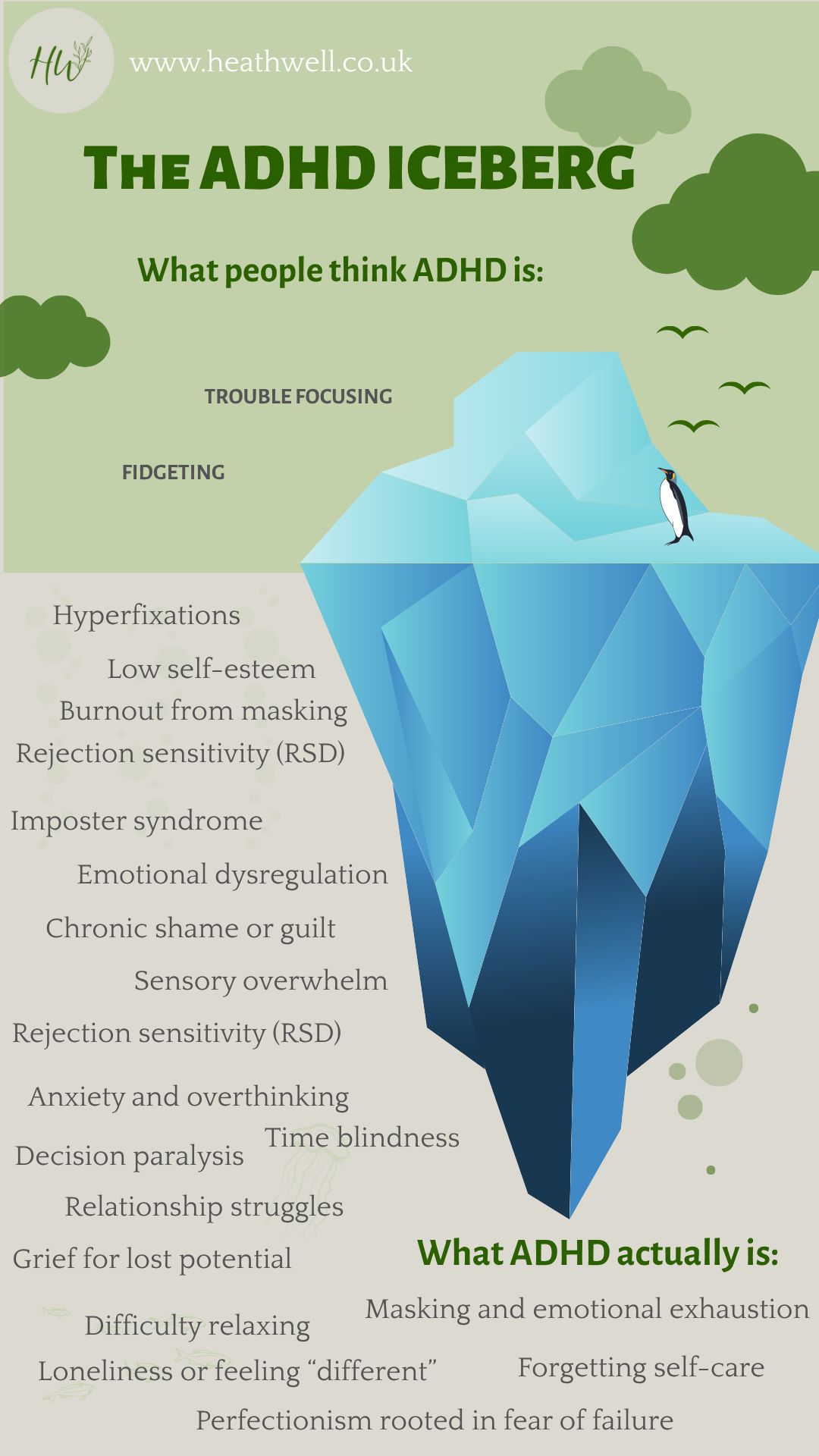The ADHD Iceberg: What Lies Beneath the Surface
When people think of ADHD, they often picture what is most visible: difficulty focusing, restlessness, impulsivity and forgetfulness. These are the traits that others notice first, the behaviours that get labelled, the symptoms that make it into diagnostic criteria. Yet these visible signs are only a small part of the full picture.
Beneath the surface lies a deeper and more complex reality. Many adults and young people with ADHD live with intense emotions, rejection sensitivity, shame and chronic exhaustion from years of trying to meet expectations that do not fit how their minds work. They may seem inconsistent or disorganised, but often they are fighting to stay afloat in an environment that was never designed for them. The effort to appear in control can lead to masking, burnout, anxiety and a deep sense of inadequacy.
Understanding the Iceberg
The ADHD iceberg helps us understand this hidden depth. Above the water are the behaviours that others see: the missed deadlines, the interrupting, the lost keys, the inability to sit still. These are real and they matter, but they tell only part of the story.
Below are the emotional and psychological experiences that shape daily life. Emotional dysregulation that makes feelings feel overwhelming and unmanageable. Perfectionism born from a lifetime of criticism. Time blindness that makes every deadline feel impossible. Decision fatigue from a brain that struggles to filter and prioritise. The constant fear of being misunderstood, of being too much or not enough.
These invisible struggles are often the most painful part of ADHD. They are the wounds that accumulate when you have spent years being told to "just try harder" or "just focus". They are the exhaustion of maintaining a façade that everything is fine when internally you feel like you are drowning. They are the grief of not being understood, even by those closest to you.
Moving Towards Compassion
Awareness means learning to see beyond behaviour and recognising the inner world of the ADHD mind. It means understanding that what looks like carelessness might be overwhelm. What appears as laziness might be paralysis. What seems like rudeness might be impulsivity or anxiety.
With understanding and compassion, we can move away from judgement and towards acceptance. We can create space for people with ADHD to feel seen, supported and valued for who they are, not just for how well they can mimic neurotypical expectations.
This shift begins with curiosity rather than criticism. It continues with validation rather than dismissal. And it grows when we recognise that ADHD is not a character flaw but a different way of experiencing the world, one that deserves accommodation, respect and genuine support.
When we look beneath the surface, we find not disorder but difference. Not deficiency but depth. Not problems but people who have been working incredibly hard, often without recognition, simply to navigate a world that was not built with them in mind.
If you're struggling with ADHD or supporting someone who is, therapy can provide a space to explore what lies beneath your own iceberg. Understanding the full picture is the first step towards self-compassion and meaningful change.
We offer ADHD therapy in Blackheath, easily accessible from Southeast London, Greenwich and Lewisham. We support adults and young people in understanding their ADHD experience and developing strategies that honour how their minds actually work.

